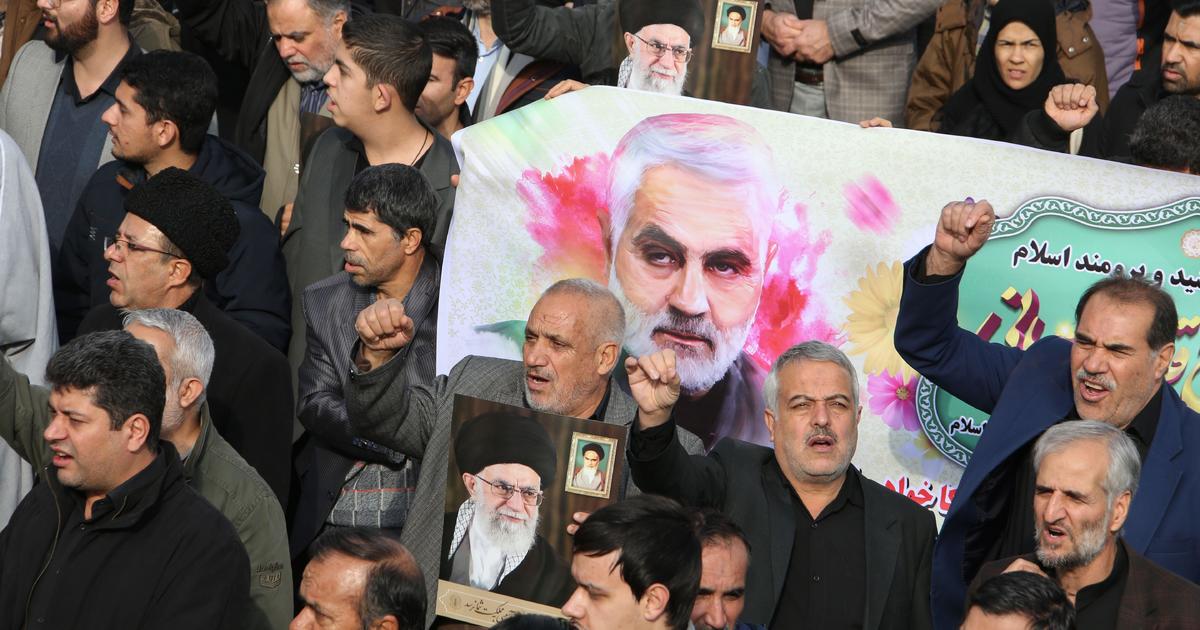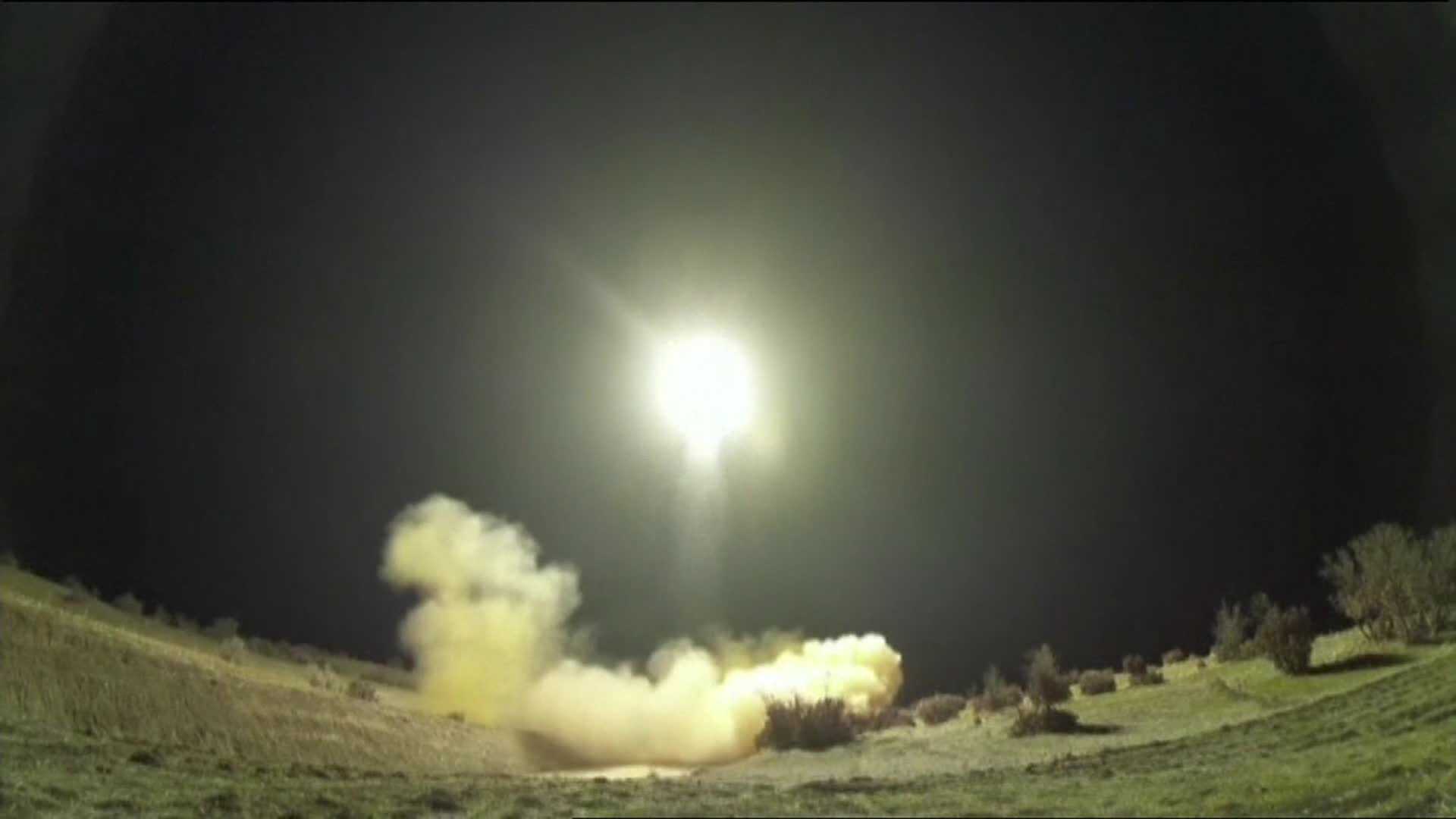Wana News Agency
Via Reuters
Debris of a plane belonging to Ukraine International Airlines that crashed after taking off from Iran's Imam Khomeini airport, Jan. 8, 2020.
MOSCOW — Ukrainian investigators are considering the possibility that that an antiaircraft missile might have hit the doomed passenger jet that crashed near Tehran killing all 176 aboard as an initial report released by Iran Thursday said the plane was on fire while still in the air.
The preliminary Iranian investigation cited witnesses saying the plane was burning and was turning back to Tehran because of the problem when it went down.
Ukrainian investigators said they were also considering engine failure or a terrorist attack as possible causes for the crash.
The Ukraine International Airlines flight — bound for the Ukrainian capital, Kyiv — departed Tehran at 6:12 a.m. on Wednesday and was approaching 8,000 feet when it abruptly lost contact with ground control, officials said.
The report from Iran’s Civil Aviation Organization said that eyewitness reports from the ground and from the crew of another flight in the vicinity reported seeing a fire while the Boeing 737 model airplane was still in the air and then an explosion when it collided with the ground near an amusement park.
“The trajectory of the collision indicated that the plane was initially moving toward the west, but after encountering a problem, it turned to the right and was approaching the airport again at the time of the crash,” Ali Abedzadeh, the head of the Civil Aviation Organization, said in the report.
Iranian officials said immediately after the crash that the plane encountered technical problems but this did not appear in the report, which also noted that there was no distress call from the aircraft.
[Iran crash presents embattled Boeing with new crisis]
A Ukrainian plane with 45 experts and search-and-rescue personnel arrived in Tehran early Thursday to participate in the investigation as well as identify and repatriate the bodies of the 11 Ukrainians on board, including all nine crew members.
Oleksiy Danylov, secretary of Ukraine’s National Security and Defense Council, wrote on Facebook that his team wants to search for possible debris of a Russian missile, the Tor air defense missile, at the crash site after seeing online reports about the discovery of possible fragments of one near the crash site.
He added that Ukraine’s commission includes specialists who helped investigate the July 2014 downing of Malaysia Airlines Flight 17 in Ukraine.
The government has also suspended all Ukrainian flights over Iranian airspace until “the reasons of the tragedy are determined.”
AP
AP
In this photo from the Ukrainian Presidential Press Office, the plane carrying Ukrainian experts prepares to depart for Tehran at Borispil international airport outside Kyiv, Ukraine, Wednesday, Jan. 8, 2020.
The Iranian report said that both the flight data recorder and the cockpit voice recorder were recovered but damaged. While Abedzadeh has said Iran won’t share those so-called black boxes with Boeing, other countries have been invited to participate in the organization.
The passengers on the plane were mostly Iranians but also included Europeans and more than 60 Canadians.
[176 people died in the Ukrainian plane crash in Iran. Here are some of their stories.]
Several U.S.-based aviation experts have raised skepticism that a technical malfunction brought down the plane as Iranian officials suggested in the immediate aftermath of the crash. Iran, however, has strongly rejected speculation that a missile might have hit the plane.
Brig. Gen. Abolfazl Shekarchi, a spokesman for the armed forces, described that chatter to Iran’s Mehr news agency as American “psychological warfare,” as well as “ridiculous” and an “utter lie.”
“Most of the passengers on this plane were invaluable Iranian youth; everything we do is aimed at defending our people’s and country’s security,” Shekarchi said.
About four hours before the crash, Iranian forces launched more than a dozen ballistic missiles into Iraq, targeting an Iraqi air base with U.S. personnel and a facility in the northern city of Irbil in response to an American airstrike last week that killed the commander of Iran's elite Quds Force, Maj. Gen. Qasem Soleimani.
American passenger airliners had been told not to over Iran because of the risk that they could be mistaken for military aircraft. Several other major airlines followed suit Wednesday.
Jeff Guzzetti, who headed the Federal Aviation Administration’s accident investigation division until his retirement last year, said preliminary and publicly available evidence, like eyewitness video of the crash and news organizations’ photos of the wreckage, suggested the plane was brought down deliberately. He added that the emergence of further evidence could change his view.
“To me it has all the earmarks of an intentional act,” Guzzetti told The Washington Post. “I don’t know whether it was a bomb or a missile or an incendiary device. I just know airplanes don’t come apart like that.”
[After the Boeing crash near Tehran, who will investigate?]
Speaking to reporters in Ottawa on Wednesday, Canadian Prime Minister Justin Trudeau said that 138 of the victims were destined for Toronto and promised that the crash would be “thoroughly investigated.”
“Canadians have questions and they deserve answers,” he said.
Asked if he could “categorically” rule out that the plane was not shot down, Trudeau said that he could not, adding that it is too early to speculate on possible causes.
Marc Garneau, Canada’s transport minister, said that satellite data suggests the aircraft had a “standard departure” and then lost contact with officials soon after, suggesting that “something very unusual happened.”
Garneau, a former astronaut, said that Canada is willing to assist with black box analysis, if asked.
Amanda Coletta in Toronto and Michael Laris in Washington contributed to this report.
Read more
Ukrainian passenger jet carrying over 170 people crashes in Iran, killing all on board
A timeline of the escalation in the Middle East
Iran took revenge, no one died, and the risk of war abates, for now
Today’s coverage from Post correspondents around the world
Like Washington Post World on Facebook and stay updated on foreign news
Let's block ads! (Why?)
https://news.google.com/__i/rss/rd/articles/CBMiyAFodHRwczovL3d3dy53YXNoaW5ndG9ucG9zdC5jb20vd29ybGQvZXVyb3BlL3VrcmFpbmUtZmxpZ2h0LXdhcy1vbi1maXJlLWluLWFpci1hbmQtcmV0dXJuaW5nLXRvLXRlaHJhbi1hdC10aW1lLW9mLWNyYXNoLWlyYW4taW52ZXN0aWdhdG9ycy1zYXkvMjAyMC8wMS8wOS85YjI3NDM0Yy0zMjQ0LTExZWEtOTcxYi00M2JlYzNmZjk4NjBfc3RvcnkuaHRtbNIBAA?oc=5
2020-01-09 10:34:00Z
52780544880119



